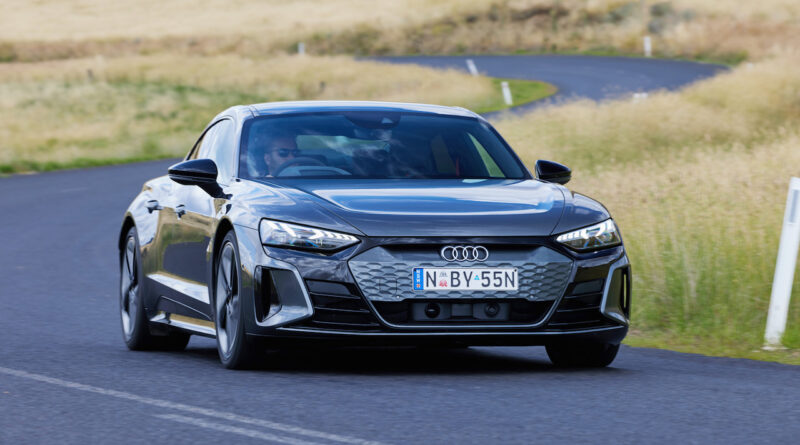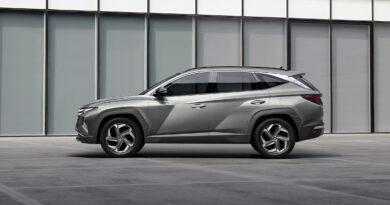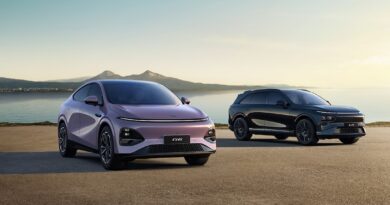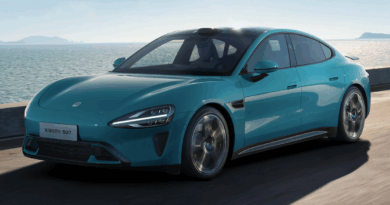Audi RS e-tron GT review: Driving the most powerful production Audi ever
The new Audi RS e-tron GT is proof that if you’re going to enter a new era then you should do it with a bang.
This long, low five-door super-coupe is not only the most powerful Audi electric vehicle ever built, it’s the most powerful Audi production car of all time.
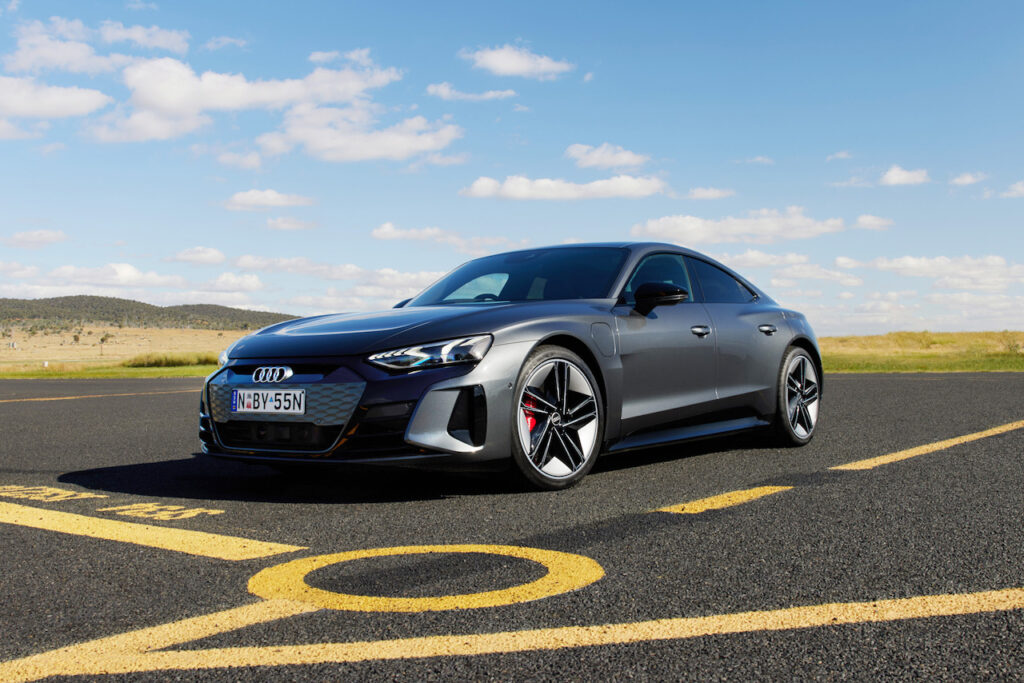
READ MORE: Audi’s ultra-niche luxury coupe pickup EV
READ MORE: Audi to add Q5 PHEV in Australia mid-2023
It’s also the first BEV to wear Audi’s RS performance badge and has just landed in Australia.
It’s time for our first drive. Let’s fly!
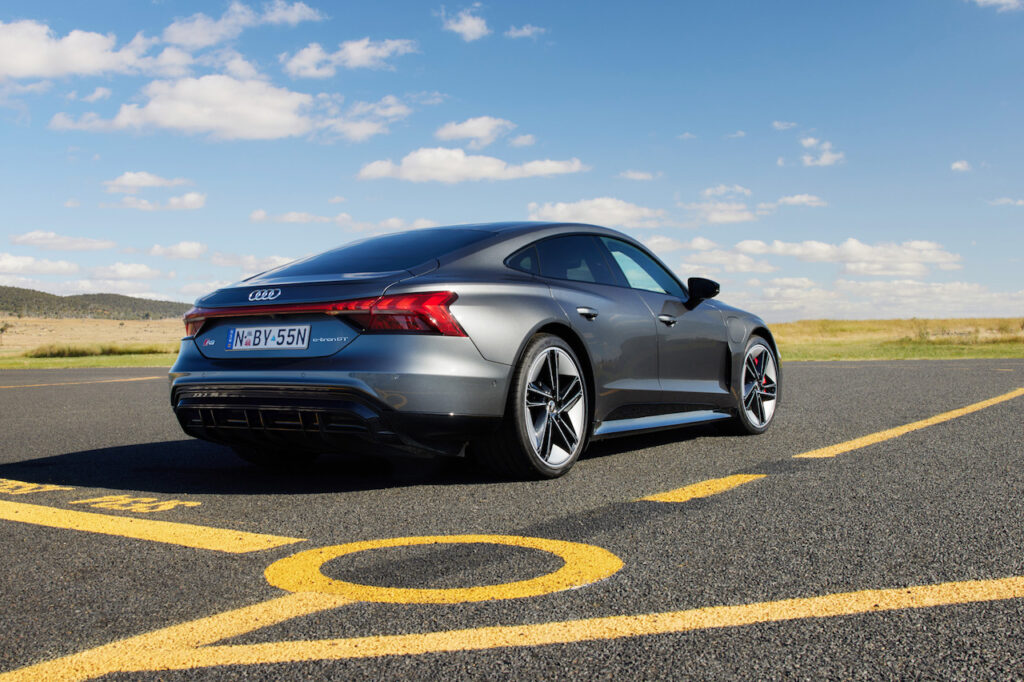
Value
The Audi RS e-tron GT costs $248,200 plus on-road costs. Its less powerful relation, the e-tron GT, is $180,200.
The key competitor for the RS e-tron GT is the Porsche Taycan, of which the GTS model is closest on price at $240,300 (plus ORCs).
E-tron and Taycan are based on the same J1/PPE platform and share much of their technical make-up.
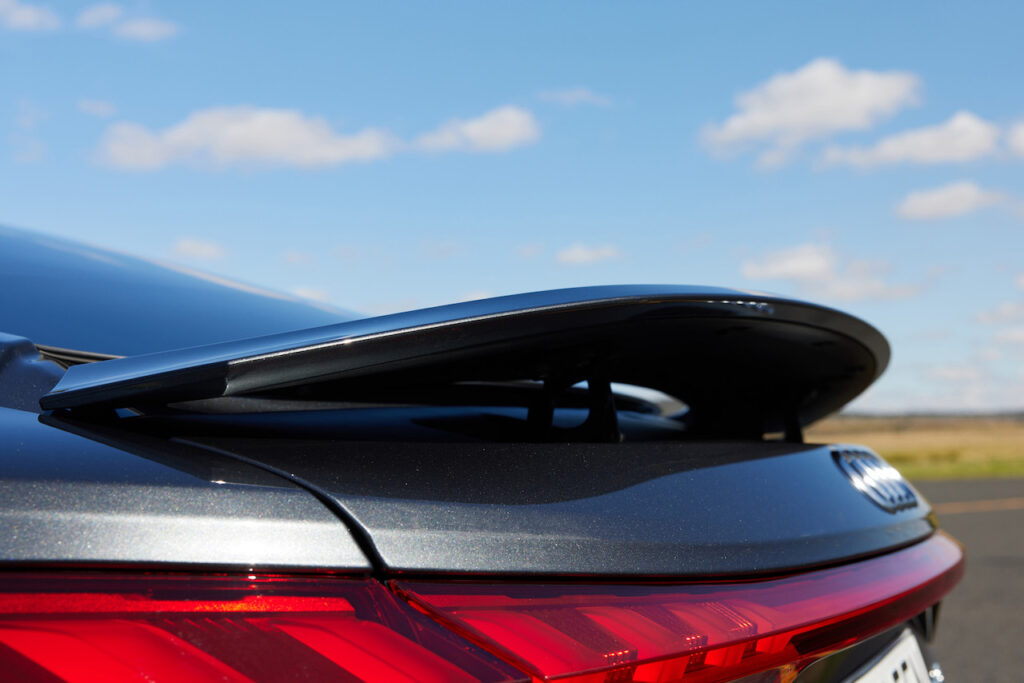
Another rival is the Mercedes-AMG EQE53, which has also just launched in Australia.
It might sound sacrilegious, but you can add the stunning Kia EV6 GT to this list. It’s much cheaper than the three Germans, but still immensely capable.
RS e-tron GT exterior signatures include 21-inch alloy wheels, black exterior styling for bits like mirror caps, a filled in EV version of the Audi singleframe grille in body colour and red brake callipers.
Exclusive features inside include powered sports front seats with lumbar adjust and ventilation, Nappa leather interior trim, inlays in carbon fibre, steering wheel heating, colour ambient lighting, illuminated door sills and an alarm that provides push notifications.
Features shared with the e-tron GT include an adjustable rear wing that fully extends at 170km/h, metallic paint, a huge panoramic glass roof, a power tailgate with gesture control, keyless entry and start, tri-zone climate control, seat heating and a power adjustable steering column.
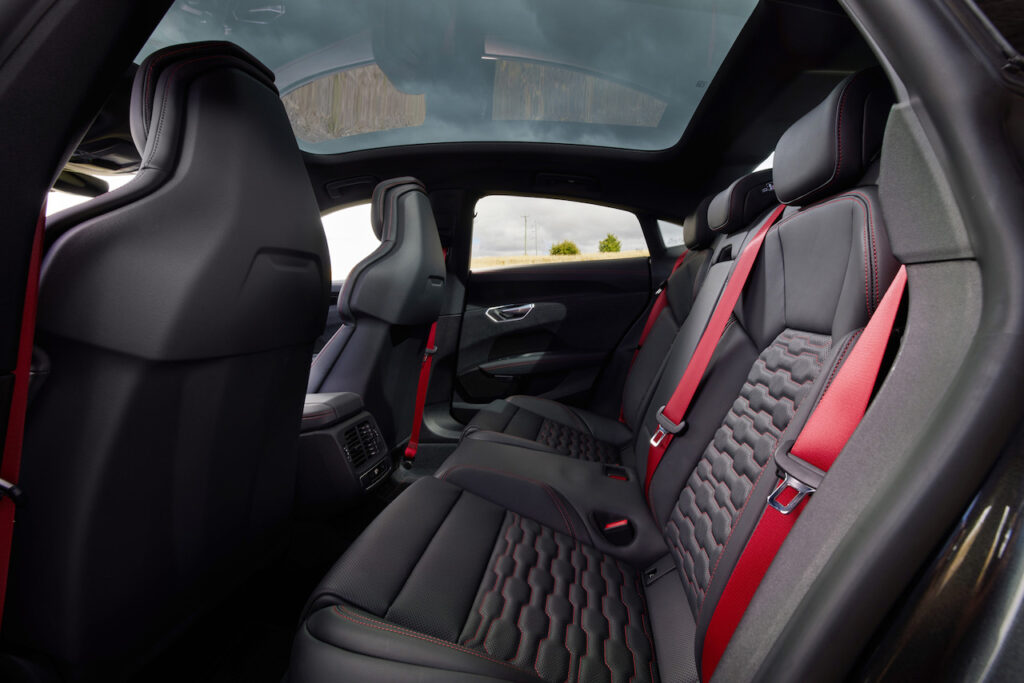
A configurable 12.3-inch ‘virtual cockpit’ instrument panel and a 10.1-inch infotainment touchscreen are tech highlights. The latter includes embedded satellite-navigation and Audi connect online services such as traffic information, parking information and weather.
Specific e-tron online services include remote charging, remote climate control and driving data,
Apple CarPlay and Android Auto are available wirelessly or via a cable. Some smartphones can also be charged wirelessly. There are four USB-C outlets in the cabin.
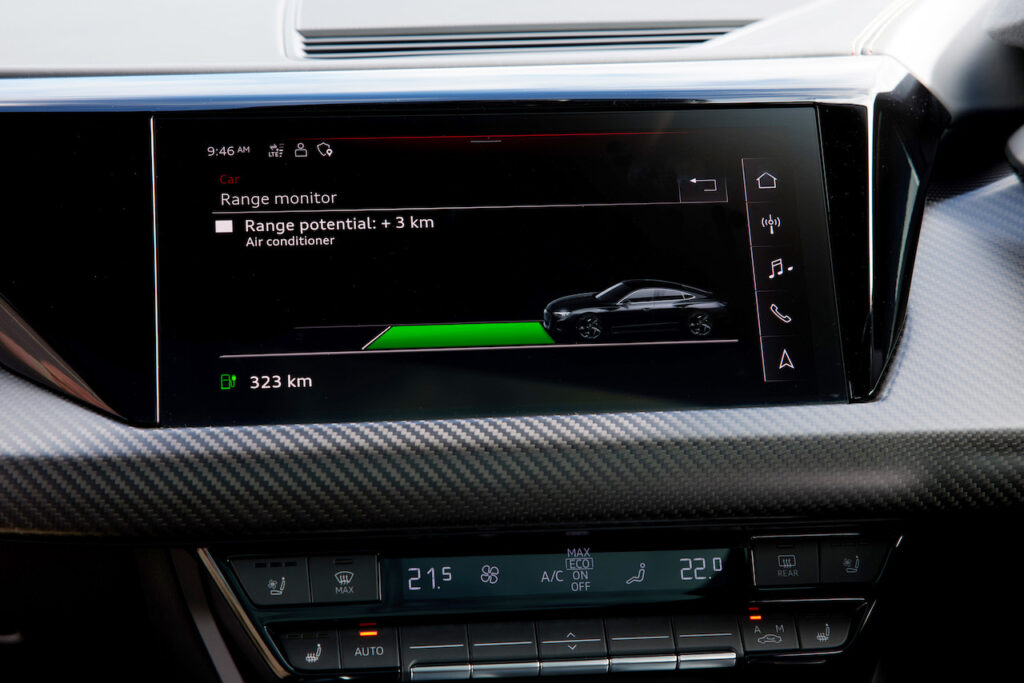
DAB+ digital radio and FM radio are included, but the AM band is omitted.
The RS comes with some costly options, including a $15,000 carbon and black pack, an $8400 sensory package and a $4550 RS design package costs $4550.
Audi offers a five-year/unlimited km factory warranty for the RS e-tron GT, along with an eight year/160,000km battery warranty.
RS e-tron GT owners get complimentary home charger installation, six years public charging, scheduled servicing and road-side assistance.
Service intervals are lengthy at two years/30,000km.
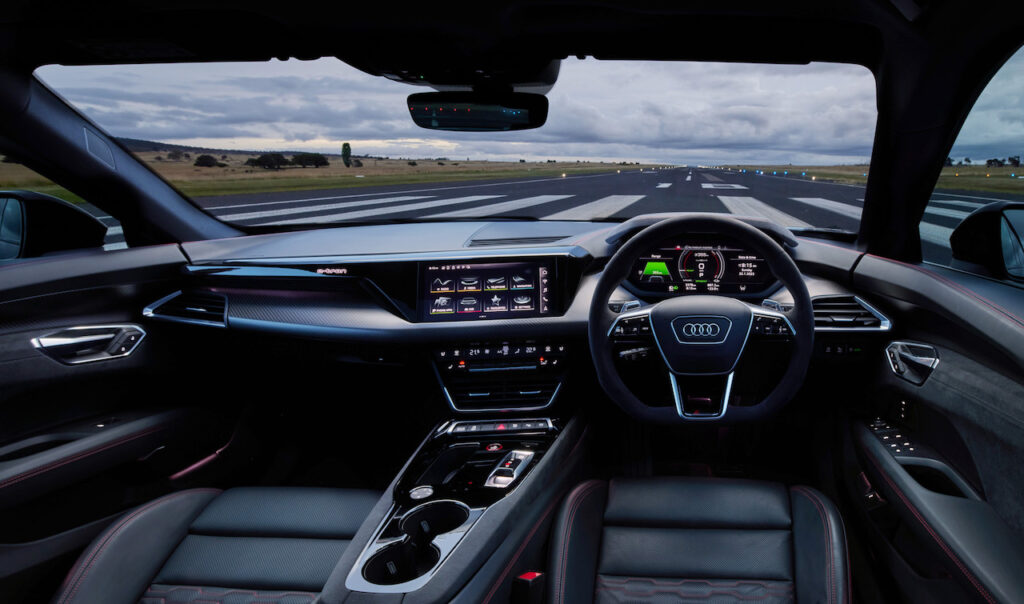
Interior
The RS e-tron GT’s digital instrument panel can be tuned through different configurations and views, including a version where a map takes up most of the screen.
Apart from the standard Audi design and content, the touchscreen adds unique e-tron sub menus for charging, including advice on level, timing, limits and pre-conditioning.
Control of the screens is primarily through direct touch as the old MMI wheel has been discarded by Audi.
There are hard buttons for the climate control system, which is appreciated. There’s also a small dial on the centre console to control audio volume and power. It’s a bit fiddly.
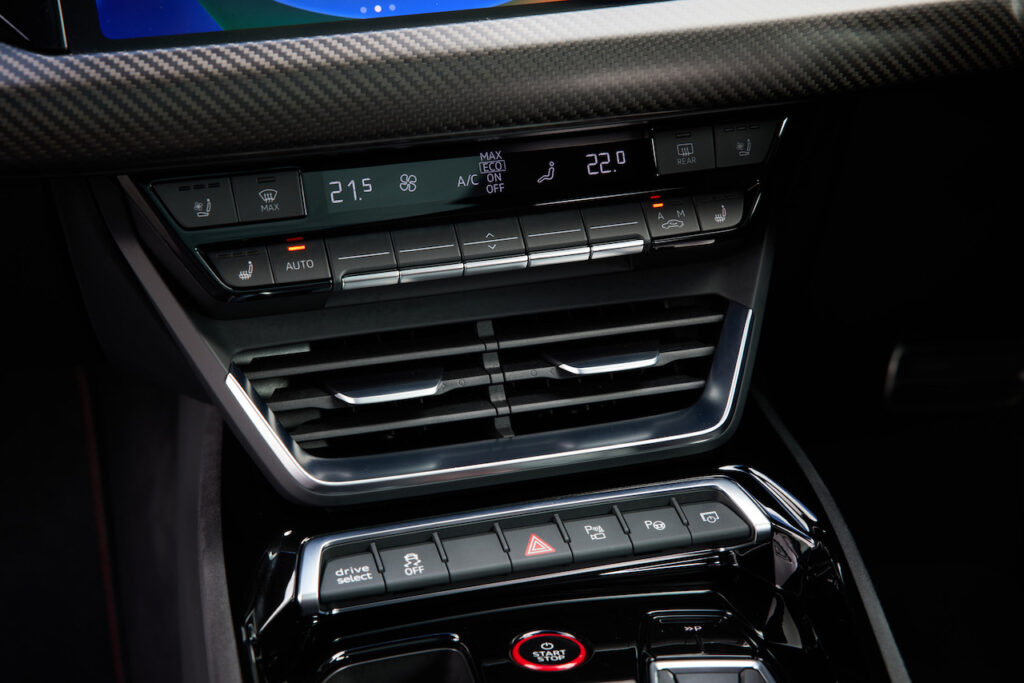
The driver grasps a dimpled, sculpted steering wheel and puts the car in gear via a toggle on the centre console. After that it’s just steer, throttle, brake.
Front seats are very supportive and adjustable, storage is acceptable rather than generous.
Headroom isn’t too bad in the backseat but kneeroom is snug. The battery pack shape has been scalloped into what Audi calls a ‘foot garage’ to allow more room.
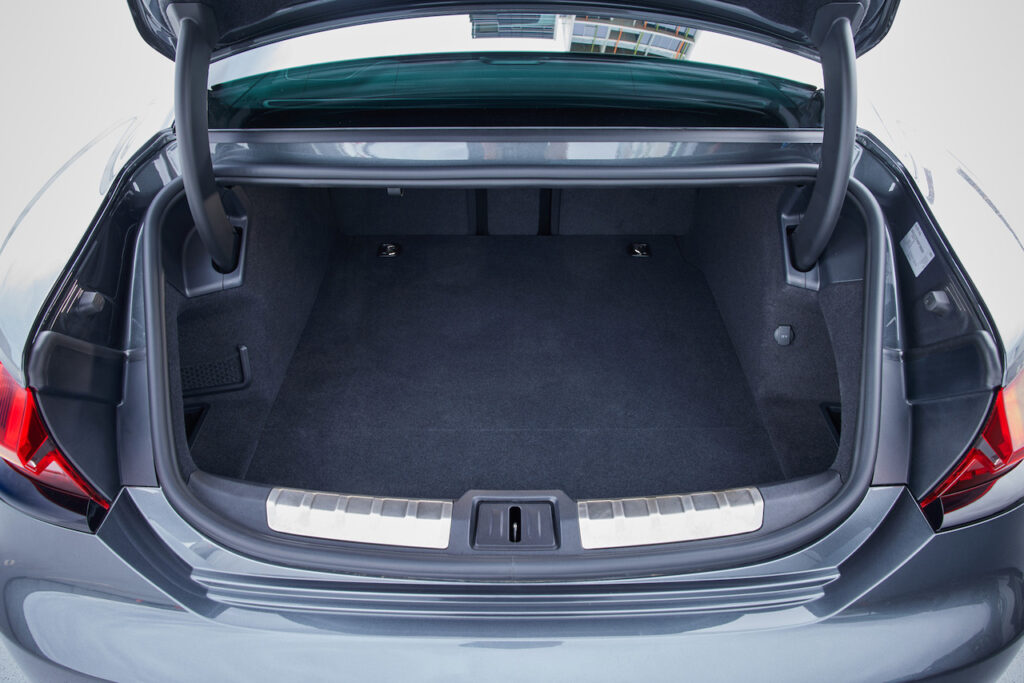
There are tiny door bins for storage back here, but no seatback pockets. The rear USB-C outlets are hidden on the seat base. Small doors and a high sill make exit and entry less graceful.
The RS has only 350 litres of room in the boot. There are another 85 litres in the frunk.
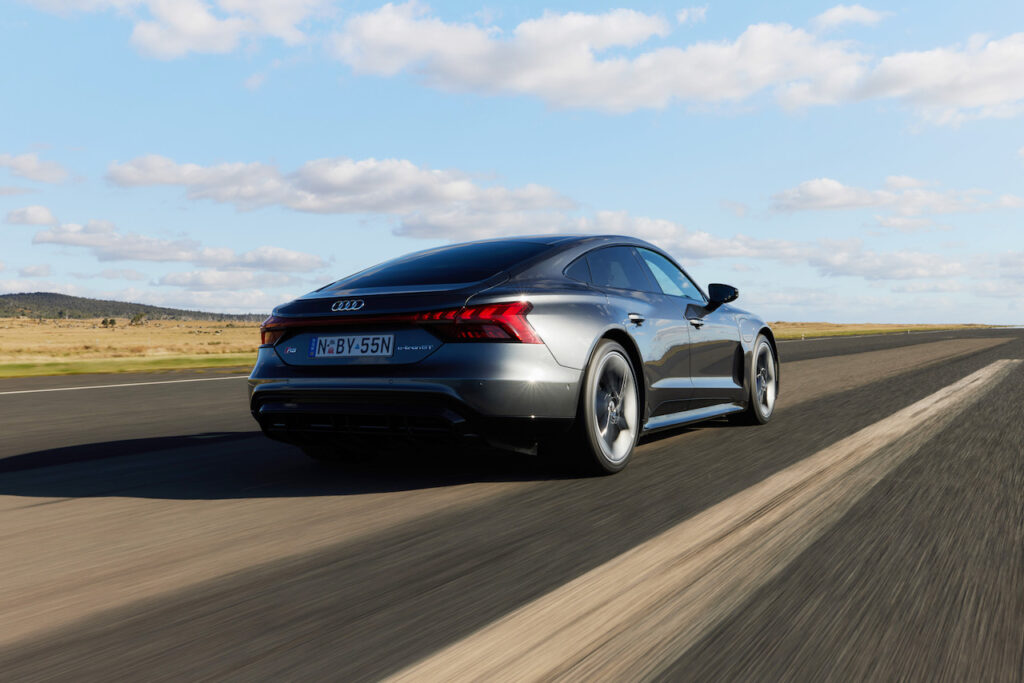
Performance and efficiency
The RS e-tron GT is all-wheel drive with a permanently excited synchronous e-motor sitting on each axle.
Combined, they produce 440kW and 830Nm. Add in 2.5 seconds of overboost that pumps the total up to 475kW, making this the most powerful production Audi ever – petrol or electric.
Performance claims are extraordinary. In the sharpest dynamic mode or with launch control enabled, the RS claims a 3.3 second 0-100km/h time and a 11.1 sec 0-200km/h sprint. Top speed is set at 250km/h.
The rear motor drives via a two-speed automatic transmission split into high and low ratios. When driving casually the car takes off in second gear. When launching hard, first is used and sometimes the shift is perceptible.
The RS e-tron claims a 504km range based on the NEDC testing regime. Under WLTP it drops to 455km.
Energy is stored in an 83.7kWh (net) lithium-ion battery pack sitting between between the axles. Average consumption is claimed to be 20.2kWh per 100km (NEDC). When cruising it got within a couple of kWH of that.
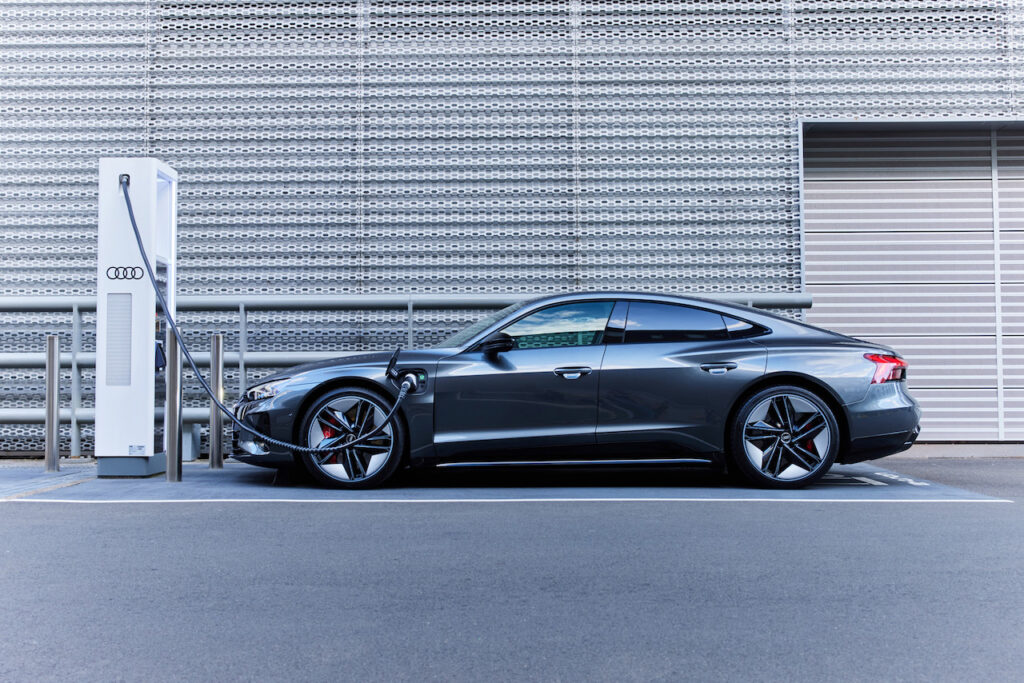
Charging
An 800v electric architecture allows the RS to DC fast charge at a claimed rate up to 270kW when the battery is low. As it fills, speeds drop, but it was still sucking up juice at a rate of 119kW when 78 per cent full when we stopped for quick boost.
The max standard AC charging rate is 11kW but that can be uprated to 22kW.
Regenerative braking energy can be adjusted via paddles on the RS e-tron’s steering wheel, but it never seemed especially strong during our drive and does not allow one pedal driving.
Energy recuperation can be set to auto, allowing the car to maximise that function. Given how little impact is noticeable operating manually, it’s probably the sensible thing to do.
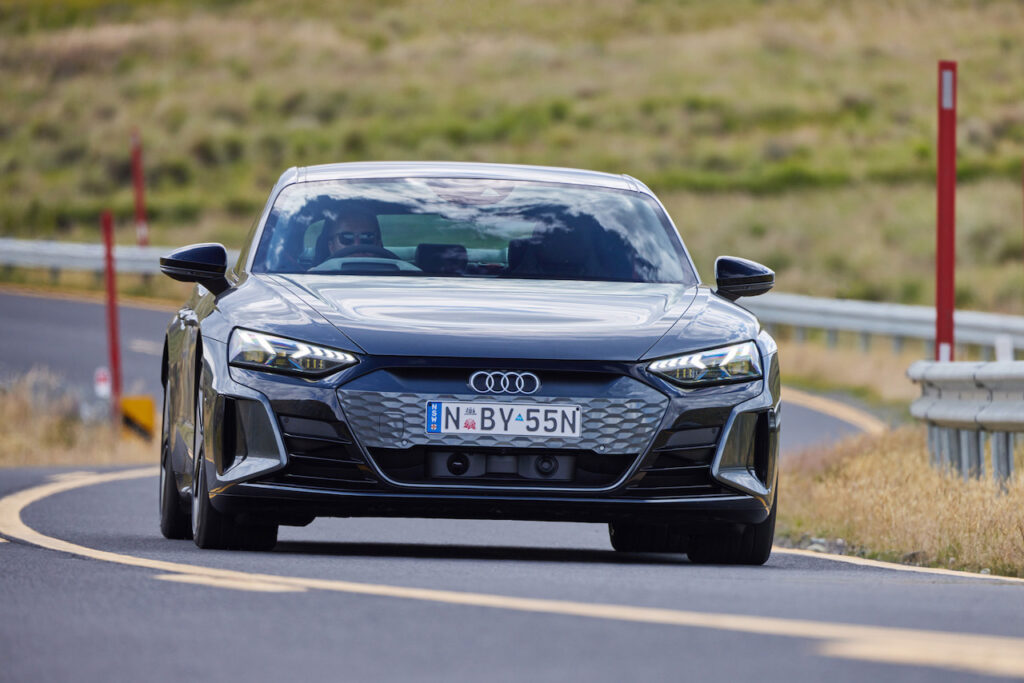
Ride and handling
The Audi is a really substantial car. It weighs in at 2345kg unladen despite the plentiful use of aluminium throughout. It is just shy of 5.0 metres long, is 1964mm wide, 1414mm high and has a 2900mm wheelbase. Our test car rolled on staggered Goodyear Eagle F1 rubber.
Under the skin, the RS e-tron GT has a heap of go-fast aids the standard e-tron GT misses out on. They include all-wheel-steering, a Haldex rear axle differential lock and bigger tungsten carbide-coated brake discs, which are clamped by six-piston callipers up-front.
The double wishbone front- and multi-link rear suspension system comes with adaptive dampers, height adjustable three-chamber air springs and electro-mechanical steering.
The behaviour of the powertrain, chassis and even the synthesised soundtrack can be dialled through multiple drive select modes including, comfort, efficiency, dynamic and individual.
All that tech combines into a car that is stunningly fast in a straight line and offers prodigious grip when it comes to the corners.
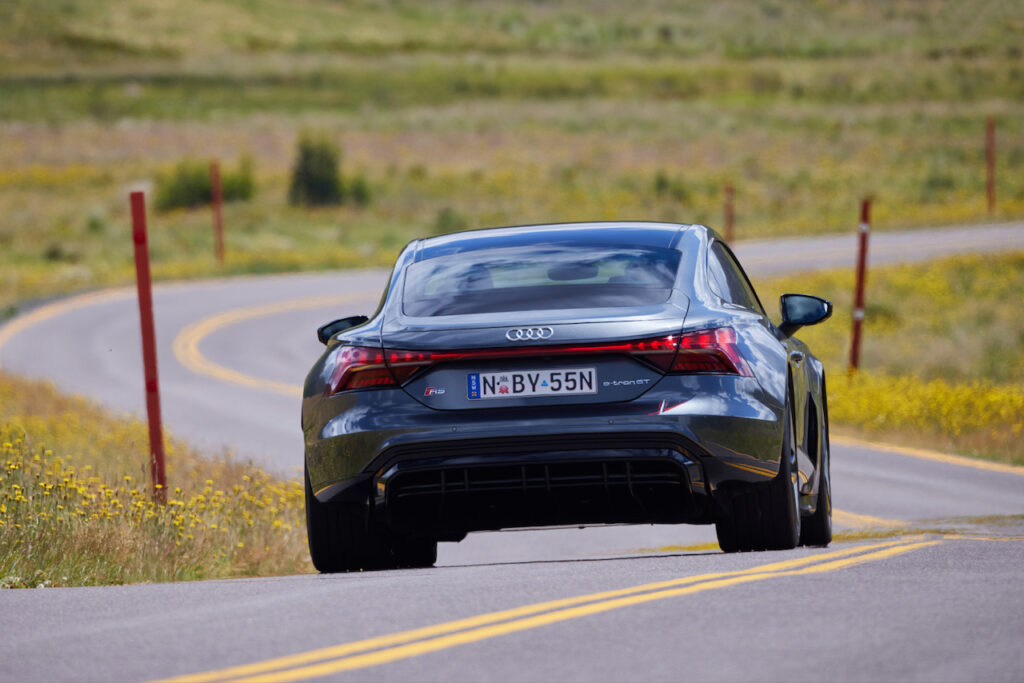
It’s hard to imagine anyone ever getting tired of the RS e-tron’s ability to pin passengers in their seats under hard acceleration. Max torque at tip-in throttle is one of the most charming traits of EVs.
It’s a great party trick any time you take a friend for a ride.
Of course, the straights are only part of the CV for a performance car. The RS e-tron corners so flat and fast it’s like it’s on rails.
The lack of traditional performance car signals like engine and exhaust sounds and gear changes can be a bit misleading. You can arrive at the twisty bits faster than intended.
Distant yet fast steering (remembering all-wheel steer) means finding the right cornering line can be a bit of a search.
The RS e-tron has been tuned to ride with a little more suppleness than the Taycan and that’s to its benefit for fast cross-country cruising and even playing the commuter role. The GT part of its name is not just there for affectation.

Talking point
The Aussie pricing of the RS e-tron GT actually went down between its February 2022 announcement and its January 2023 on-sale.
OK, not by much. It dipped from 249,700 (plus on-road costs) to $248,200 (plus ORCs). But hey, every bit counts. Thank the slightly adjusted luxury car tax threshold for the extra loose change.
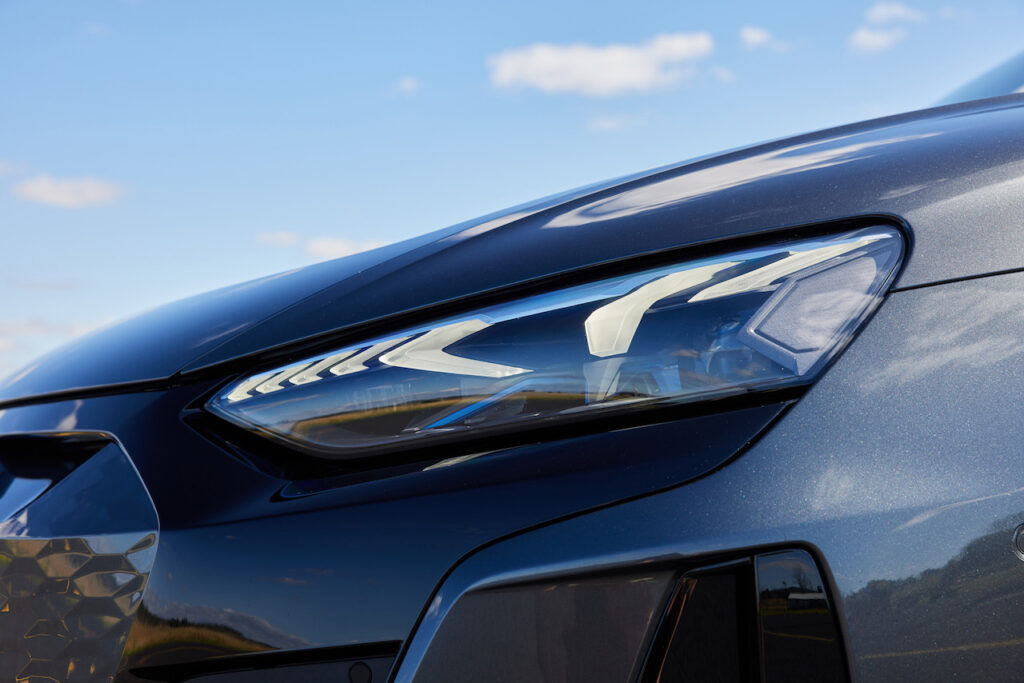
Safety
The RS e-tron GT comes standard with a swag of safety gear that includes front, front- and rear-side airbags and curtain airbags.
The autonomous emergency braking system operates at up to 85km/h for pedestrians and 250km/h for vehicles. But the specs say nothing about spotting cyclists.
Adaptive cruise control regulates the distance to the vehicle in front. It can also stop and go in heavy traffic and guide the e-tron GT within in its lane.
Active steering lane assist, blind spot monitoring, intersection crossing and turn assist, rear cross traffic assist, a 360-degree camera, a head up display and LED Matrix headlights with top-spec Audi Laserlight are also fitted.
The Audi pre sense system anticipates accidents and undertakes functions like tensioning seatbelts and closing the sunroof. The e-tron GT also provides additional steering torque when it senses the driver is in an emergency situation.
There is no spare tyre, but the RS e-tron GT at least has tyre pressure monitoring.
There is also no ANCAP safety rating. Cars in this exorbitant price range rarely do.

Verdict
The Audi RS e-tron is perplexing. It’s mega-expensive, mega-fast and mega-capable.
It should be the sort of driver’s car that delivers experiences that remain etched into the memory forever.
But for all the power and performance the RS e-tron doesn’t deliver the huge level of emotional connection great driving cars do.
This is a challenge for BEVs that isn’t unique to the RS e-tron.
But even with that considered, there’s no doubt the RS e-tron GT demands respect as a vehicle capable of crossing country at a lightning pace.
It’s a powerful statement.
Audi RS e-tron GT specifications
Price: $248,200 plus on-road costs
Basics: EV, 5 seats, 5 doors, large hatchback, AWD
Range: 504km (NEDC)
Battery capacity: 83.7kWh
Battery warranty: 8 years/160,000km
Energy consumption: 20.2kWh/100km (NEDC)
Motors: One on each axle, combined maximum output 475kW/830Nm
AC charging: 11W, Type 2 plug
DC charging: 270kW (approx), CCS Combo plug
0-100km/h: 3.3 seconds (claimed)

